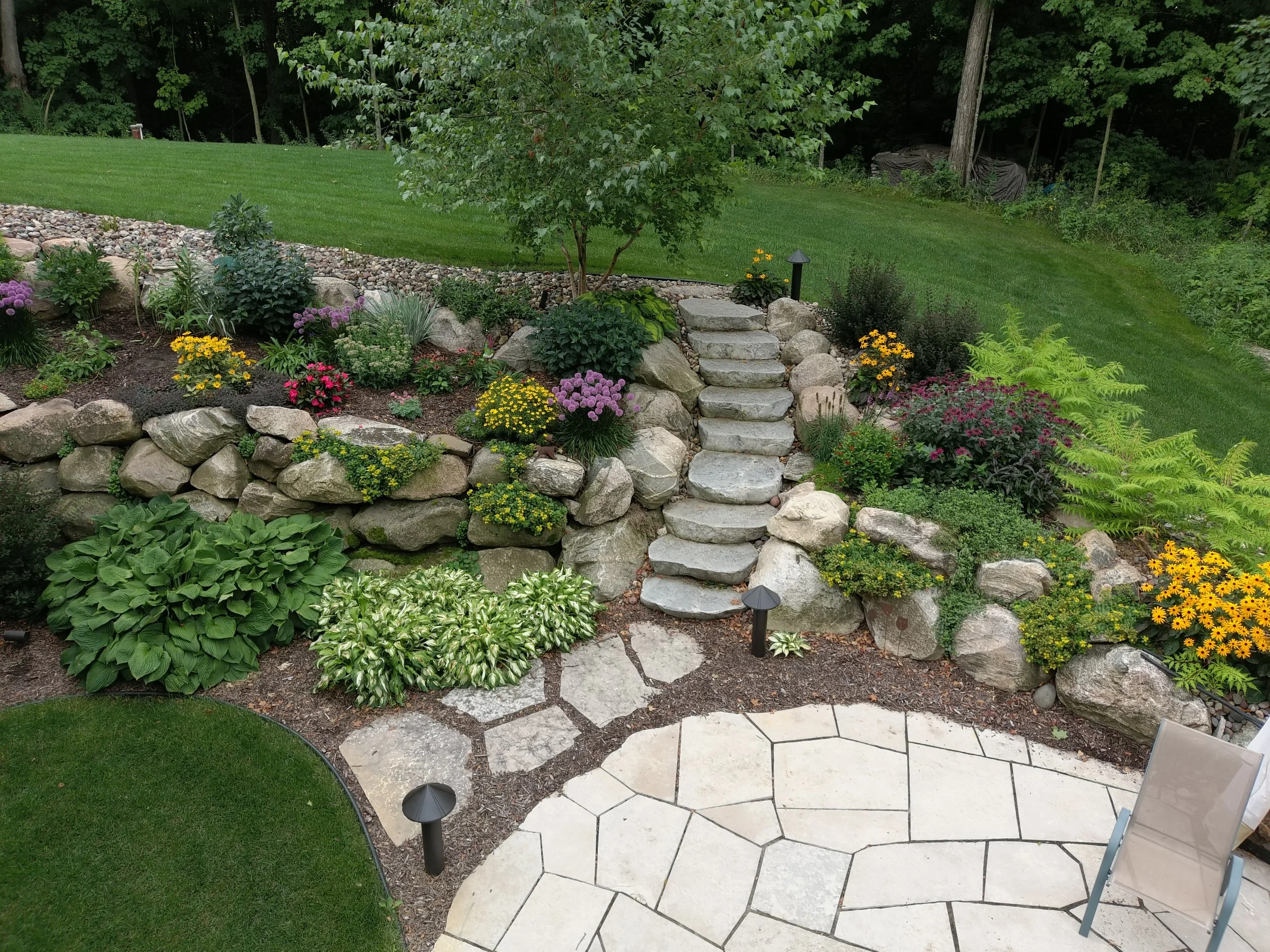Multidimensional, multifunctional.
Never settle for the one-size-fits-all aesthetic of the big-box store brand of retaining wall—make it the star of the show!
Retaining walls are so much more than just practical solutions for sloped yards – they're a fantastic way to add visual interest and create usable space! Imagine turning that awkward hillside into tiered gardens, inviting patios, or even a cozy fire pit area.
With a well-designed retaining wall, you can transform an unusable slope into a stunning focal point. Plus, today's technology means your retaining wall will not only look beautiful but also stand strong and last for years to come, giving you peace of mind and a gorgeous landscape to enjoy.
Materials
Natural Stone
For a traditional or woodland look and for garden terracing, natural stone is the way to go. We offer dozens of options to match your landscaping and home.
Boulder
A popular choice for both large and small sloped yards. This creates pockets for shrubs and waterfall plants, and adds a modern naturalist feel to the landscape.
Cor-Ten Steel
Also known as weathering steel, Cor-Ten Steel was designed to eliminate the need for painting. After several years of weather exposure, it will form a stable rust-like appearance.
Concrete
For a minimalist and clean appearance, this is especially effective around pools and spas, and in structural and conceptual gardens. Makes an excellent pairing with Cor-Ten Steel.
Rock Gabion
From Italian gabion meaning "big cage,” this wall is essentially is a cage, cylinder or box filled with rocks, concrete, or sometimes sand and soil. You may recognize these types of walls in artsy new spaces, particularly around breweries and cultural buildings.
Maintenance
Minnesota winters are powerful, and like all stone and concrete features, there will be a bit of maintenance involved. Inspect your wall regularly and address any changes by giving us a call as soon as possible. What are you looking for exactly?
Cracks and gaps that form from the harsh Minnesota winter.
Bulging that occurs with settling soils behind the wall.
Debris clogging the drain pipe, which ensures proper drainage.
Post-winter eroded areas where ice melt and water may have pushed away soil.
Post-winter dead spots of grass or plantings along the edges.








